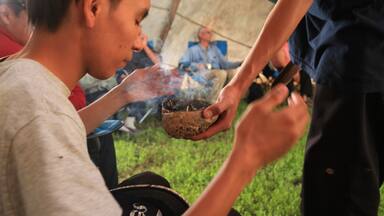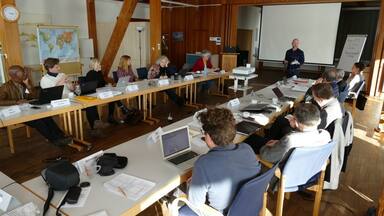Ramsar and World Heritage: lasting cooperation to foster conservation

Gland, Switzerland – Conservation of cultural and natural values can highly benefit from dual designations under the Ramsar and World Heritage conventions, finds a new report released today. “Ramsar and World Heritage Conventions converging towards success” illustrates through six case studies the benefits and challenges of managing wetland ecosystems and gives examples on how community participation contributes to positive conservation of both natural and cultural heritage. The case studies build on the study by IUCN “Managing MIDAs” (2016), which provided guidance for sites with multiple international designations (MIDAs).
The report is one result of long-term partnership between the World Heritage Convention and the Convention on Wetlands of International Importance, which was signed in Ramsar (Iran) in 1971. It is funded through UNEP’s InforMEA programme, and is also supported by Ramsar’s MAVA-funded Culture and Wetlands partnership.
The report champions cooperation and collaboration of these only existing global site-based conventions and reiterates the necessity to work closely together in order to properly manage and to address challenges dual designated sites are facing. Dual designation as a World Heritage property and a Ramsar site is an opportunity to improve management methods and better overcome future challenges by enhancing a lasting partnership fostering wetlands conservation.
Provisions of the two conventions can be mutually supportive and complementary and can ensure that cultural values are fully embedded in the protection and management of the designated sites. Throughout both synergistic and divergent designation criteria, the Ramsar and the World Heritage conventions offer widened conservation management objectives.
The report also underlines the significance of indigenous and local communities’ participation and involvement, often leading to improved governance and more effective management of protected areas. The Sustainable Development Policy, endorsed by the Word Heritage Committee in 2015, makes reference to “Respecting, consulting and involving indigenous peoples and local communities”. The Ramsar Convention has also recognized the importance of indigenous and local communities in sharing knowledge and delivering wise use of wetlands, especially through the Ramsar Strategic Plan 2016-2024.
In 2016, more than 97 areas were listed across the globe under both the Ramsar and the World Heritage conventions, for their unique and rare wetland ecosystems.







